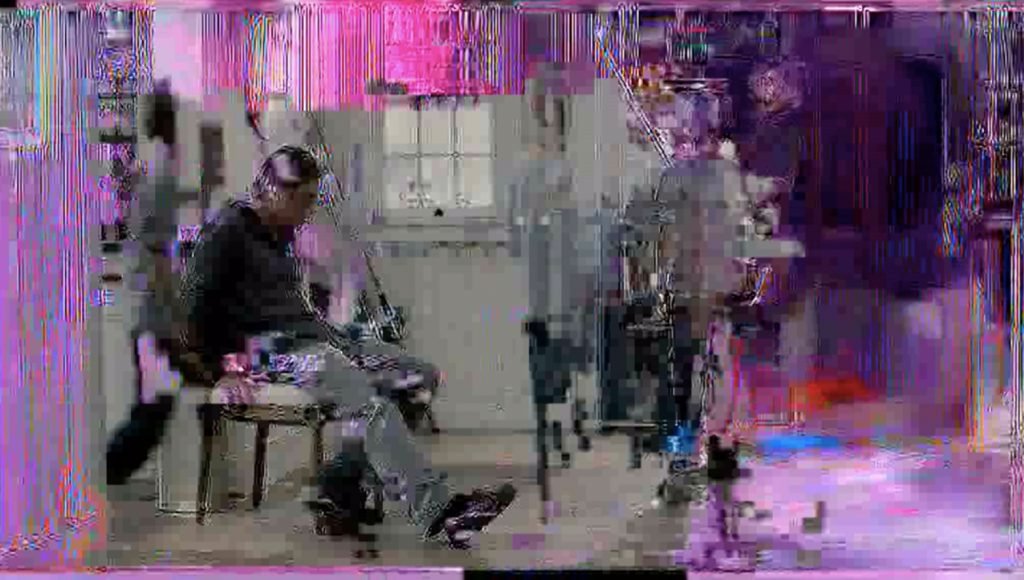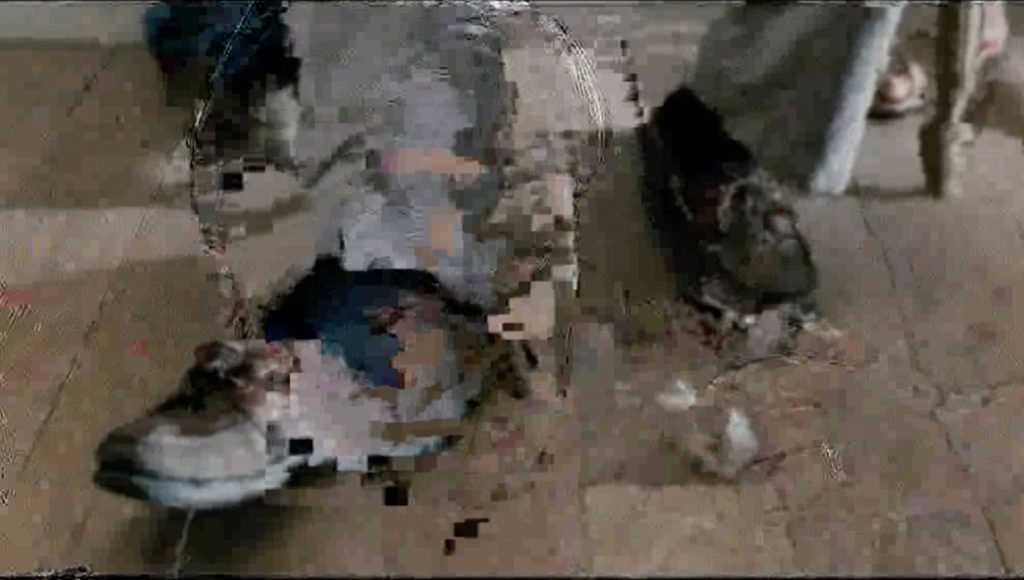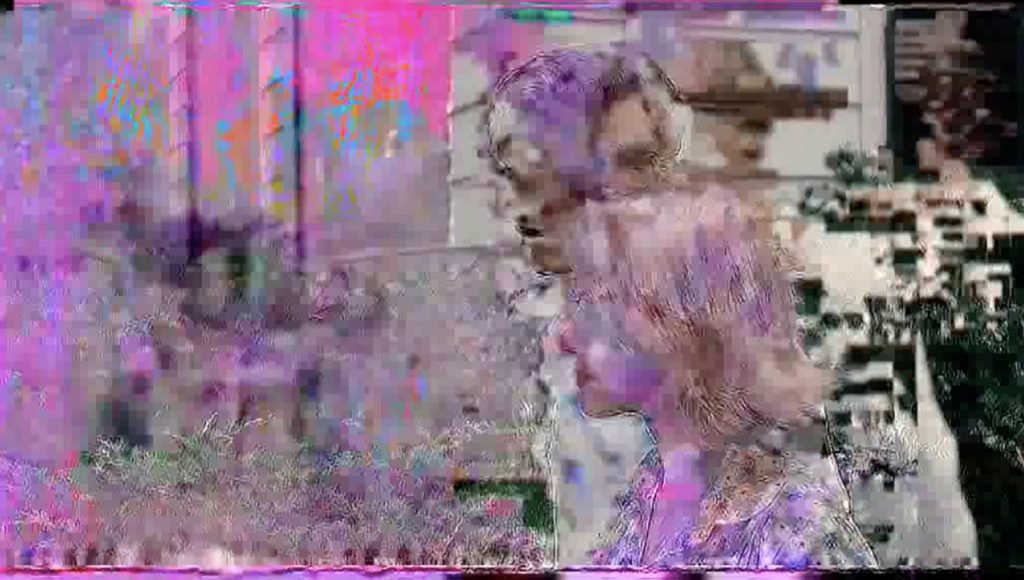In a linguistic universe that cannot exempt itself from passing through technological mediation, glitches and crashes (what therefore results and emerges from systemic errors) constitutes a “sign” that has become part of our visual culture as a curious, attractive element, something not dissimilar for abstraction and narrative disorientation to a dejà vu.
The intensification of the relationship with machines and devices has grown to the point that these random episodes constitute a presence that is more significant of the mediation relationship operated by the techno-linguistic devices to which we have entrusted (for about twenty years part) now much of our communication, distorting the very nature of what we communicate.
Errors and bugs are nothing more than a system or process defect. A systematic phenomenon that however can generate a sense of curiosity and becomes, when the error manifests itself in image, (be it video, photography, graphics, etc.) similar to what the French critic and linguist Roland Barthes expresses in the concept of punctum .
If Roland Barthes’ concept of punctum can be applied today to contemporary linguistic practices exactly as he applied it to photographic language, it is perhaps possible to assume that what Barthes tries to highlight in photography can also be traced in digital glitch.
Describing the punctum in his work “La chambre claire” (Paris 1980), Barthes refers to photography as a medium. However The concept of punctum is certainly capable of a greater breath than the use made by the author himself and undoubtedly, his concept can also be applied to current technologies and media since each medium has its own glitches.
In his work Roland Barthes uses a Latin term to refer to the very feeling of punctum. According to Homer, as Victor Burgin claims, “trauma” derives from the Greek term meaning “wound”; the word punctum is its Latin equivalent.
In his notion, Barthes describes the different qualities of punctum as a constellation of sensitive points that pass through it. The punctum constitutes a reference or identification point; interrupts, penetrates and entertains the eye. In her essay “Pleasure of the Phototext”, Jane Gallop states that punctum emerges as unexpected to allow “life” to continue. It is intrinsic quality to the processes and errors of the same machine, its signature, its own expression, part of its expressions.
An accident that allows the manifestation of a sign, or precisely punctum that subverts, regenerates, distracts and reorganizes the same narrative. Barthes describes it as an element that disturbs the “studium” (everyday life) as “a puncture, a cut, a small hole”. Gordon Hughes argues that in the essay “Camera Lucida” the punctum unites “what is dead, what is about to die, strangely suspended like a ghost between life and death”.
Just like glitch, the presence of punctum manifests itself as a ghost, a shadow within the machine language. Very often the punctum is a detail, for example a part of an object, a particular.
Similarly to punctum, glitch manifests itself in details, in fragments, in parts of images.
In order to make a parallel between the two concepts, however, one must first understand what glitch is. For this purpose it is necessary to dwell on the origins of the term; various are the hypotheses of its origin, one of these claims that the origin of the word glitch derives from the German glitschen, which means to slip (Mitchell); another hypothesis sees the use of the word glitch by NASA engineers and astronauts: “it seems that it appeared for the first time in the jargon in the sixties and seventies, used to refer to small unexpected errors in time travel” (Siner).
In popular culture, the term began to spread to describe an error in the mechanical space equipment described by John Glenn in the 1962 Project Mercury report, “Into Orbit”.
The first use of the term glitch in English was during the 1962 American space program in a comment by John Glenn: “Literally, a glitch is a peak or a change in voltage in an electrical flux.” A glitch in a circuit that is involuntary and problematic for an engineer can represent an interesting punctum from the point of view of the development and experience of the artistic language.
Facing a contemporary scenario that offers itself as increasingly spoiled by the linguistic practices of digital communication and by the incessant, continuous, circulation of images whose quality and performativity leads to the formation of a perception of the world as an increasingly perfect and spectacular place (as well as functional and devoid of real roughness), the bugs of digital technology can interfere with this habitual and smooth story proving that, despite the incredible expressive and performative ability, the narratives created starting from the implementation of the digital technologies aren’t less fallible than those in vogue previously.
The interruption of the signal, the altered recording, the temporary and minute interruption of correct information on our screens is the sign both of a lack of technological perfection, as well as the potential temporal gate through which you can see something else for a short moment, something whose vision and experience does not confirm the linguistic procedures to which we are spoiled, but shows itself as “shapeless”.
In this regard, it is therefore useful to find the notion of shapeless, whose first theoretical formulation is expressed around the 1930s, when Georges Bataille dedicates one of the items of the ‘Dictionary’ to it (a column included in the art magazine “Documents” of which he is director.) The voice Bataille dedicates to the “Informe” (shapeless) can be said to summarize the entire Documents project.
Within this project, the shapeless takes on the value of a cognitive and epistemological tool: the formless does not deny the form, does not transcend it and is not even a subject simply intended as an antithesis of the form. It serves primarily to ‘downgrade’, to push the closed, academic, conventional, approved “beautiful shape” downwards (the spit that disfigures it, the spider or the worm that gets crushed on the ground), revealing all those other forms that creative activity and narrative project have put to death, and that the shapeless detects and makes survive as its potentiality or phantasmatic, imaginary and disturbing threats.
Speaking of glitches, Iman Moradi in “designing imperfection” suggests that “sometimes they definitely steal the show”.
This effect could easily be considered a feature that glitch has in common with punctum. Indeed, Barthes states that the photographic punctum is an error that annoys and at the same time captures attention thanks to its intensity. The error that in any medium is an accident, an element that disturbs our senses by altering the reading and the impression of the content is an unexpected interruption, the possibility of moving away from the subject and its form, the possibility of undertaking an unexpected reading of things, far from the traditional discourse.
The presence of a glitch as a rupture (real and/or simulated) in a flow of predisposed information opens the same communication to the unexpected, putting the user of the altered content in the condition of having to fill in the first person that void of meaning that the bug implicitly created by altering narrative practices.
Similarly to a child who, not without fear, at night in his bed, contemplates the indefinite shadows that the dark forms in his room, making this formless and “other” the subject of fantasies now terrifying now unrepeatable in a speech ordered by sense.
In front of the perception of an error in the transmission, the user finds himself facing the signs of a suspension of the linguistic certainties to which up to that moment he entrusted himself without question – and finds himself, with equally fear (similar to that of the child at the mercy of the shadow and of his own fantasy), having to undertake an experiential and perceptive path for which there are no guidelines, but only the possibility of verifying from passage to passage, from fantasy to fantasy, the form of a loss of linguistic-narrative control and the impotence of that education which, precisely by virtue of the increase brought about by digital technologies, seemed to have been able to describe and reduce in its own syntax the whole world to what has already been experienced.
Within the contemporary artistic discourse there are many artists who through the manipulation of digital mediums and their non-functional recombination, are intentionally highlighting and reproducing the aspects of the unintended and accidental.
They seek a formal and narrative expression that allows to provoke the viewer by inviting him to a renewed experience and reading of the same images. Their work becomes tense at reporting the possibility of another parallel universe of signs and narratives created precisely starting from the coding work carried out by the same machine, which, by stumbling, systemically reveals its nature for a moment.
In a perspective that in this sense is easily found in the linguistic experiences underlying all the avant-gardes of the twentieth century, glitch can be understood as an interruption or suspension experience that moves an object away from its shape and its conventional discourse to create a bewilderment from which perhaps it is possible to rethink language or at least consider it in critical terms.
Comparing it once again to Barthes’ punctum, the glitch is an oversight, an accident that breaks into the medium to subvert a flow of information and somehow our “trust” for the medium itself, which from that moment onwards reveals itself as other than us, and perhaps, in a Heideggerian vision, as a machine, capable of acting for itself, without the aid of our voice.




















